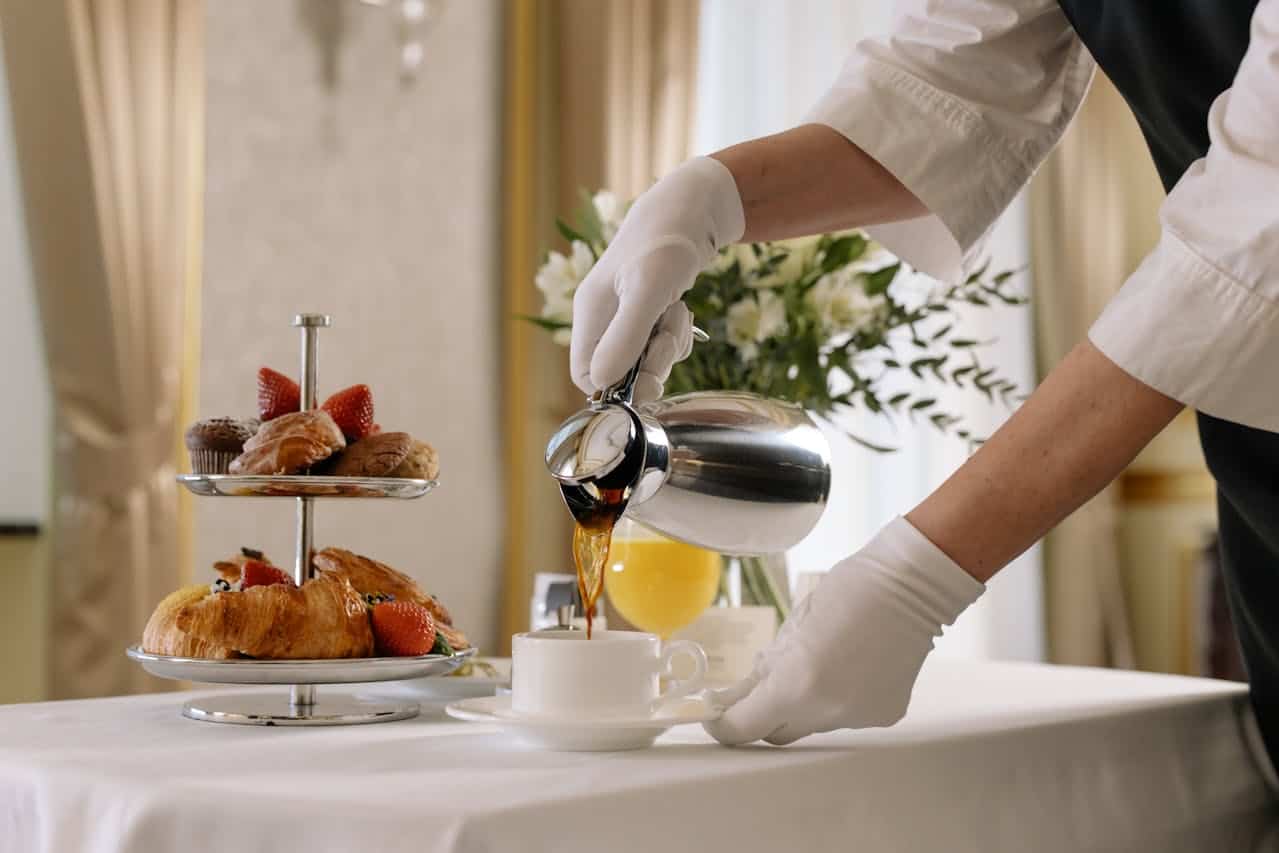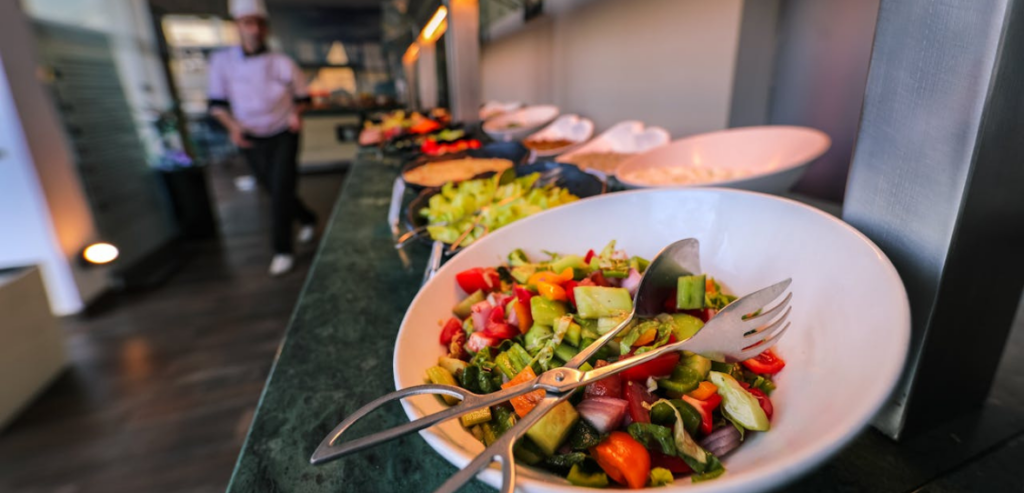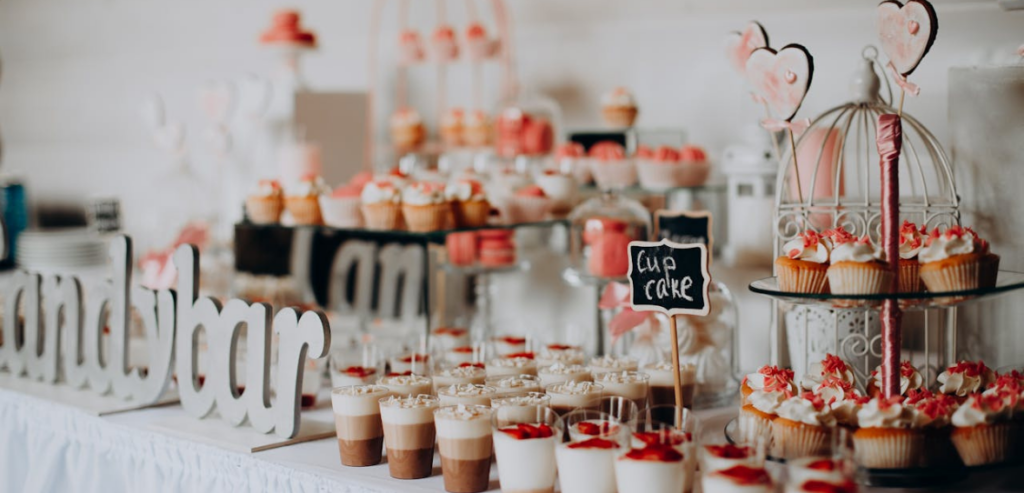
By Jermaine Thomas July 28, 2025
Behind every beautifully presented dish at a wedding, corporate lunch or private function lies a web of decisions that balance quality and cost. Guests will remember the flavour, aroma and visual appeal of their meal but caterers will remember the spreadsheets, calculations and supplier calls that made it all happen. Budgeting in the catering world is a behind the scenes operation that often determines whether an event is a success or a financial strain.
For catering professionals, creating a memorable dining experience is about more than culinary skill. It’s about having a solid catering budgeting strategy that matches customer expectations with the reality of ingredient costs, labour requirements, logistics and last minute changes. This balance is especially important when working with tight budgets or unique client requests where creativity must meet cost conscious planning.
Cost Forecasting in Catering
Accurate forecasting is the first and most important step in creating a solid budget. This means estimating all costs and setting realistic expectations early on in the planning process. Caterers don’t just guess – they use a combination of past event data, industry benchmarks and detailed quotes from suppliers and vendors to create a financial roadmap.
Breaking Down Cost Categories
A strong catering budgeting strategy divides expenses into several key categories: food and beverage, labor, rentals (like chairs and tables), venue-specific costs, transportation, and contingency funds. Each of these areas has its own cost behavior. For example, food prices may fluctuate weekly, while rental costs tend to stay stable. This layered breakdown allows caterers to adjust certain aspects without compromising the entire plan.
Adjusting Budgets Based on Event Type
A buffet-style birthday party and a five-course plated wedding dinner require very different allocations. Caterers often scale their budgets depending on the event’s format, guest count, and service level. Efficient event cost management depends on tailoring the budget to the specific event, not applying a one-size-fits-all model.
Menu Engineering for Cost Efficiency
Food is the star of any catering event and the biggest part of the budget. Menu planning is both creative and financial. Caterers must plan dishes that are delicious, seasonal and within budget – often all three at once.
Choosing Budget Friendly Ingredients
Using seasonal and local ingredients is not just good for the environment, it’s also budget savvy. When ingredients are in season they are usually cheaper and more available. Smart catering cost planning also considers ingredient versatility, choosing ingredients that can be used across multiple dishes to reduce waste.
Managing Portion Sizes
Over-serving is one of the fastest ways to blow a catering budget. Professional caterers use industry standards and past data to calculate accurate portion sizes. They may also design menus with built-in flexibility, like offering multiple small dishes or shareable platters that reduce per-head cost without sacrificing guest satisfaction.

Staffing Smarter, Not Harder
Labour is the second biggest cost component in most catering budgets. Hiring too many people inflates the cost, too few and you compromise on service. Smart scheduling and cross-trained staff helps get the balance right.
Allocating Labor by Event Flow
Understanding the flow of an event is essential. For instance, an event with staggered food service might require fewer hands at once, while a plated dinner needs all staff on deck for simultaneous service. Using event timelines, caterers allocate staff only when they’re truly needed, which aligns perfectly with efficient event cost management.
Leveraging Technology for Scheduling
Many caterers now use workforce management tools to forecast labor hours, avoid overtime, and track employee productivity. These tools are essential in refining labor costs and aligning them with actual need, making them a critical part of a scalable catering budgeting strategy.
Supplier Relationships and Negotiation Tactics
Caterers rely heavily on external vendors for ingredients, rentals, and specialty services. The quality and cost of these partnerships directly influence the overall budget. Building strong relationships and knowing how to negotiate favorable terms are both essential skills.
Long-Term Partnerships Over One-Off Deals
Preferred vendor arrangements often come with discounts, early delivery options, or priority scheduling. These relationships also offer flexibility in urgent situations, such as last-minute menu changes or venue constraints. Over time, this consistency supports more accurate catering cost planning.
Cost Comparison and Substitutions
Regularly comparing vendor prices keeps costs competitive. If one supplier raises prices, caterers may switch to alternatives or slightly modify the menu. Substitutions can maintain quality while trimming costs; like using high-quality chicken instead of a more expensive cut of meat.
Rental and Equipment Logistics
Beyond food and staff, caterers also handle logistics like cutlery, tables, linens and transportation. Each of these can blow the budget out of the water if not tracked and managed carefully.
Owning vs Renting
Some caterers invest in reusable equipment to reduce long term rental costs. This decision depends on storage space, frequency of use and maintenance costs. A long term catering budgeting strategy may include a cost benefit analysis to determine when buying equipment becomes more cost effective than renting.
Delivery and Setup Costs
Transporting food and equipment isn’t free. Caterers need to factor in fuel, vehicle maintenance and even driver wages. Consolidating deliveries – for example, combining trips or renting bigger vans – can reduce these logistical costs without impacting service quality.
Contingency Funds and Risk Planning
Even the best laid plans can go wrong. Weather problems, guest count changes, supplier shortages or last minute venue changes are all part of the catering world. Setting aside a portion of the budget for emergencies is not optional – it’s essential.
Creating a Buffer Zone
Industry best practice is to reserve 5-10% of the budget as a contingency fund. This allows caterers to adapt in real time without sacrificing quality or eating into profit. Good event cost management includes this buffer as part of the planning process.
Learning from Past Events
After-action reviews help caterers fine-tune future budgeting. By analyzing what went over or under budget, professionals improve cost accuracy for similar events in the future. This ongoing refinement is central to mastering catering cost planning over time.

Pricing Strategies That Align with Budgeting
A budget doesn’t just control spending; it also influences how services are priced. Caterers must offer competitive pricing that reflects both their cost structures and market demand.
Tiered Packages and Customization
Offering standard packages with optional upgrades gives clients control over their spending while helping caterers stay within defined budget structures. Tiered pricing helps clarify where money is going, and it prevents clients from over-customizing without understanding the cost implications.
Transparent Quoting
Clear, itemized quotes build client trust and reduce confusion. Clients understand what’s included, what’s optional, and how changes affect the price. This transparency helps avoid conflict and aligns everyone around a shared catering budgeting strategy.
Post-Event Budget Reconciliation
The budgeting process doesn’t end when the food is served. Reconciling actual vs. projected costs helps close the loop and inform future planning. Successful caterers treat this step as a vital part of their financial health.
Comparing Actual Costs
Tracking what was really spent helps refine pricing, supplier choices, and menu planning. Over time, these reconciliations create a more reliable budgeting model, especially useful for recurring events or repeat clients.
Adjusting for Seasonality and Trends
Cost factors shift throughout the year. For example, holiday menus may come with higher labor or ingredient costs. Post-event analysis helps caterers prepare for these seasonal trends and adjust their catering cost planning accordingly.
Conclusion: Budgeting Is the Backbone of Great Catering
Budgeting is crucial in catering, driving profitability and service quality. With careful planning, supplier management, efficient labor, and clear pricing, caterers can control costs while maintaining high standards. Treating budgeting as part of both creativity and operations helps caterers thrive, not just survive, in a competitive industry.